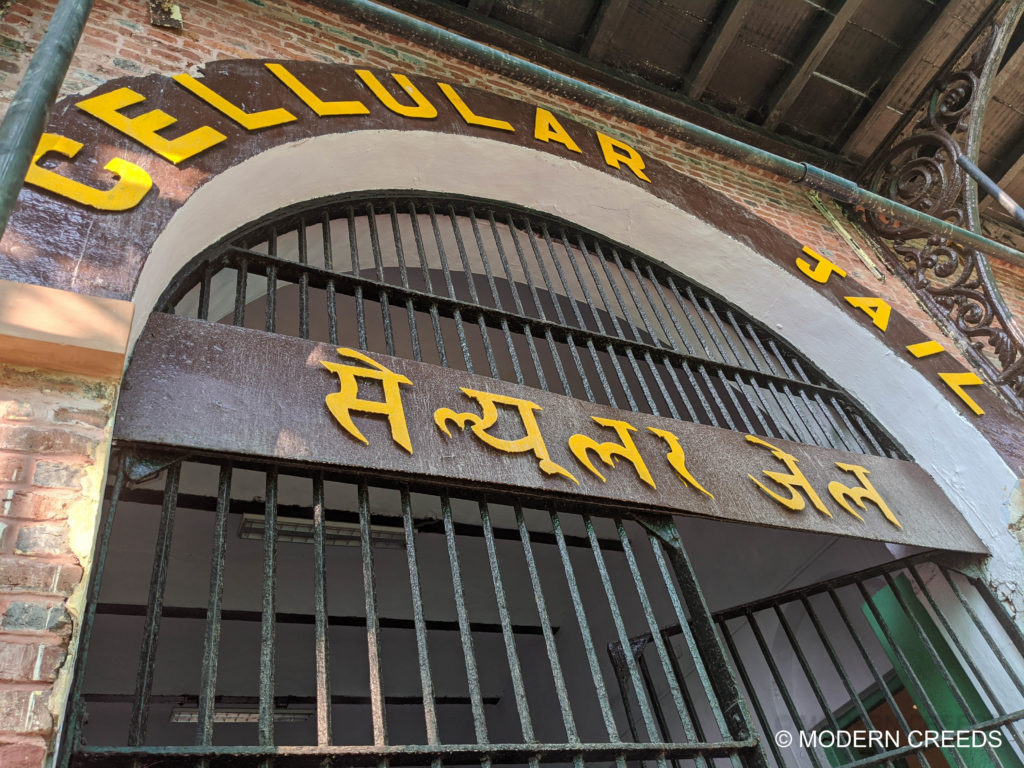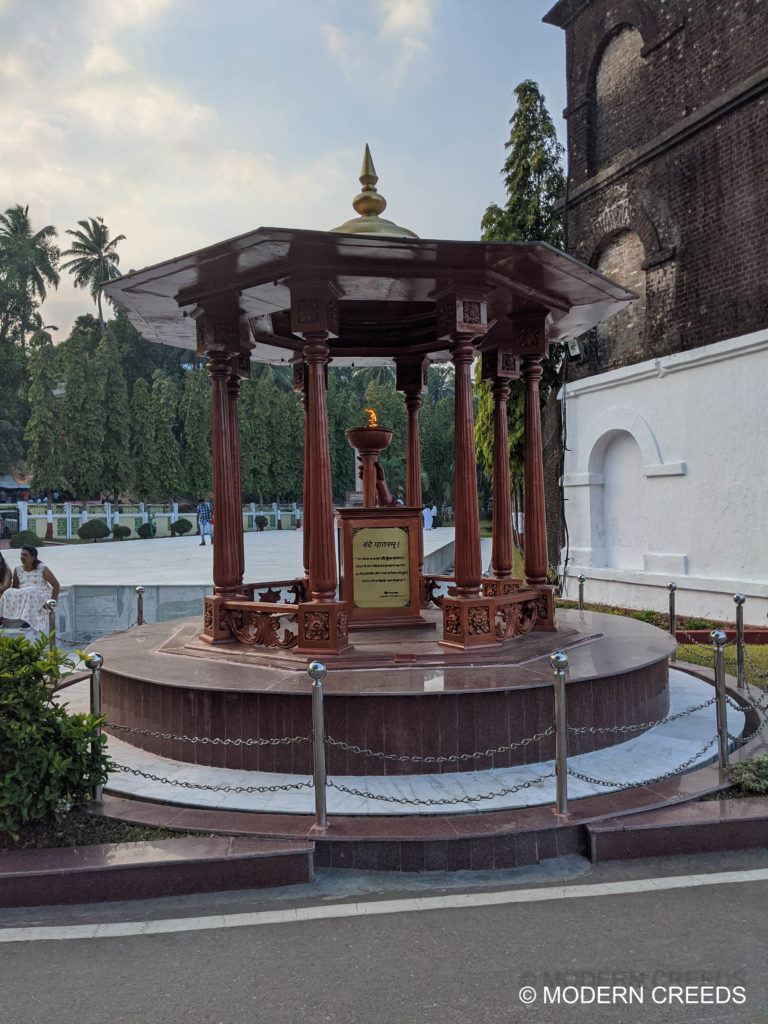Idyllic beaches and an intriguing history, Andaman and Nicobar Islands are an excellent location for a vacation. The azure waters of the Andaman Sea offer a plethora of activities like scuba diving, snorkelling, para-sailing, trek through the mangroves or just strolling on the beach and watching the sunset.
Geographical & Historical Perspective:
The Union Territory of Andaman and Nicobar Islands consist of an archipelago of 572 islands, of which 37 are inhabited. The capital city of Port Blair serves as a gateway to these islands and is connected to all the major cities in India by air. The various islands are interconnected by a network of cruises and ferries. Havelock Island (Swaraj Deep) and Neil Island (Shahid Dweep) are the most popular islands to visit for tourists. There are regular ferries and cruises from Port Blair, running from morning till afternoon (the last ferry leaves Port Blair around 3 pm). The best time to visit these islands is from January to May, before monsoons arrive.

Located in the middle of the Indian Ocean, these islands were originally intended to serve as an outpost for naval and merchant ships. However, it is infamously remembered as the location of the Cellular Jail, which imprisoned the political prisoners from India’s struggle for Independence against the British empire. After the first Indian War of Independence in 1857, the British rulers deemed it important to remove these freedom fighters away from the mainland in efforts to quell the revolution. Hence this abandoned outpost became the site of the colonial prison. Throughout the 19th century, these islands first served as the base of the British empire and then was briefly occupied by the Japanese empire during the Second World War. Netaji Subhash Chandra Bose hoisted the Indian tri-colour flag on these islands, marking them as the first Indian territory liberated from the British rule.
However the British were not the first people on these islands. The Andaman and Nicobar Islands are home to six indigenous tribes: the Great Andamanese, the Jarawas, the Onge, the Shompen, the Nicobarese and the Sentinelese. These indigenous tribes are mostly hunter-gatherers, living in temporary huts with thatched roof and using Stone Age practices like bows and arrows to hunt for terrestrial wildlife. They have lived in substantial isolation and have refused contact with the outside world. These tribes are protected by the Government of India as Particularly Vulnerable Tribal Group and some islands are cut-off from the rest of the world.
Day 1: Kolkata – Port Blair- Havelock Island
Most of the flights to Port Blair depart early in the morning, to co-ordinate with the ferry timings. Our flight to Port-Blair from Kolkata was at 7 am and two and half hour later we arrived at Port Blair with groggy eyes. Food at Port Blair is a gastronomical seafood delight, so a heavy lunch later we arrived at the jetty around noon to catch our cruise to Havelock Island. The journey took us about two hours, with breathtaking views of the Andaman Sea.

Havelock Island is one of the largest islands in the Ritchie’s archipelago, to the east of the main Andaman Island. It is best known for picturesque beaches, emerald blue waters, bio-diverse marine life and one of the best sites for scuba diving in India. This is a small island, so getting around is pretty simple. Small boats and ferries are operating from the jetty to other islands as well. Overall there is a laid-back vibe to this place which is a welcome relief for the vacationers looking to escape the bustling city life.

Word of advice: Do stay near the Govindnagar beach, which is closer to the jetty and the centre. Most of the hotels, restaurants and dive shops are located near this beach. This beach is ideal to spend your time lazily strolling or cycling around. Or just lie under the palm tree with a book in hand. Also, try both government and private ferry to enjoy both the experience. Though you can book the private ferry online, you will need to book the government ferry at the ticket counter near the Havelock and Port Blair jetty gate.



Day 2: Kalapathar and Radhanagar Beaches
After a lazy start to the day, we decided to visit the two famous beaches in this island.
Kalapathar beach is a hidden gem, situated on the southern part of the island, away from the centre. The white sand and black rocks lend a charming allure to this beach. This is a protected beach and is relatively isolated, drawing lesser crowds than Radhanagar or Vijaynagar beaches. Corals and molluscs are strewn across the beach, along with crabs scuttling around. There is also a treehouse near the beach for bird watching.



Voted the Best Beach in Asia by Time 2004, the Radhanagar beach is worth all the hype. The crescent-shaped white sand beach is surrounded by the scenic views of the lush forests. The view of the spectacular sunset is definitely the highlight of this beach. Hence do visit this beach around sunset. The beach closes after sunset. There are food shacks on the road leading to the beach, selling lip-smacking fried fishes, shrimps, squids and crab. It is no surprise that the majority of cuisine here is Bengali cuisine, since the majority of Islanders are Bengali in origin. Bengali and their love of fish is well known! After the partition of India in 1947, the Government of India had offered the families fleeing East Bengal a chance of resettling in Andaman & Nicobar Islands.


Day 3: Scuba Diving
This was the day we were eagerly waiting for! Havelock Island is one of the best sites for scuba diving in India. Pristine coral reefs and a rich marine life makes the scuba diving here an otherworldly experience.
There are a variety of dive shops here in Havelock Island, offering both shore diving and boat diving options. We opted for a boat dive with Gypsy Divers and started early in the morning for the same. The training for the dive was carried out near the shore, to get accustomed to breathing underwater using oxygen tanks. This was followed by a short boat ride to the dive site. Throughout the dive, we were accompanied by our diving instructors, making sure that we were comfortable underwater. During our dive, we came across corals, sea anemones, exotic fishes like parrotfish, snapper, fusilier and our favourites blue surgeonfish and clownfish (aka Dory and Nemo). It was truly an incredible experience and renewed my appreciation of our Blue Planet.




Day 4: Water Sports at Elephant Beach
Elephant beach is the hub of water activities at Havelock Island. A plethora of activity like sea walking, snorkelling, parasailing, jet ski, banana boat rides are available here. There are glass-bottomed boats which offer a ride to the nearest coral reefs where you can see these exquisite coral reefs and colourful fishes through the glass panels.
The Elephant beach is reached by a twenty minutes boat ride from the Havelock jetty. Alternatively, you can also trek across the jungle to reach this beach. This is also an excellent beach for swimming. Some food stalls operate here selling coconut water and fruits. The beach closes at 4 pm.



Day 5: Havelock Island – Port Blair
After spending four wonderful days, we bid adieu to Havelock Island, hoping to return someday. We came back to Port Blair on an early morning ferry and had a day to go around Port-Blair.

The formidable fort-like structure of the Cellular Jail serves as a grim reminder of the fate suffered by the prisoners exiled here. The national monument honours the lives and struggle of our freedom fighters, many of them never lived to witness India’s independence from the British rule. There is a sound and light show held in the evening, which gives a glimpse of the brutal treatment suffered by the inmates. From the terrace of the Cellular Jail, you can see the Ross Island, which was the administrative seat of the British.

Cellular Jail Entrance 
In Memory of Martyrs 
Towards Central Tower 
Ross Island 
Cell Corridor 
External Cell View
We spent the evening strolling around Aberdeen bazaar, shopping for souvenirs. There are various restaurants here, so do try the seafood cuisine. The Clock Tower here is a first World War memorial, built to honour the Indian and British soldiers fighting to defend these islands. We returned to Kolkata on an early morning flight the next day, with sand in our hair and fun-filled memories of an amazing vacation.


